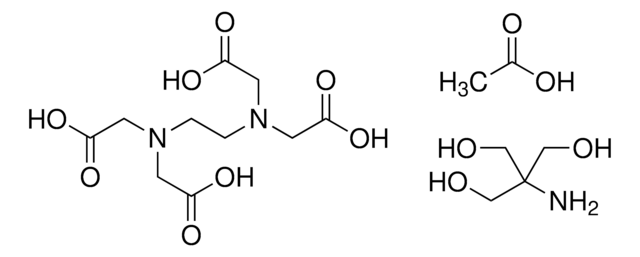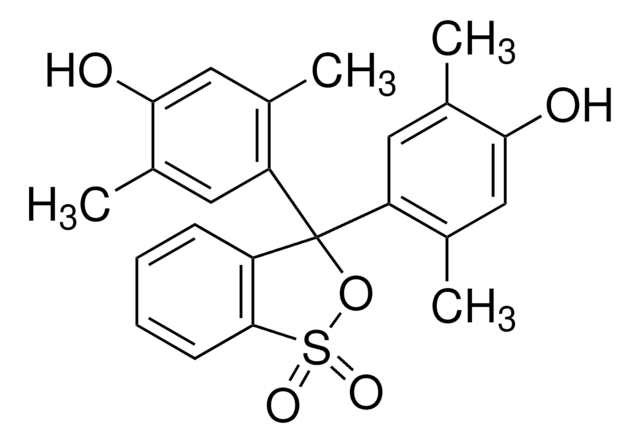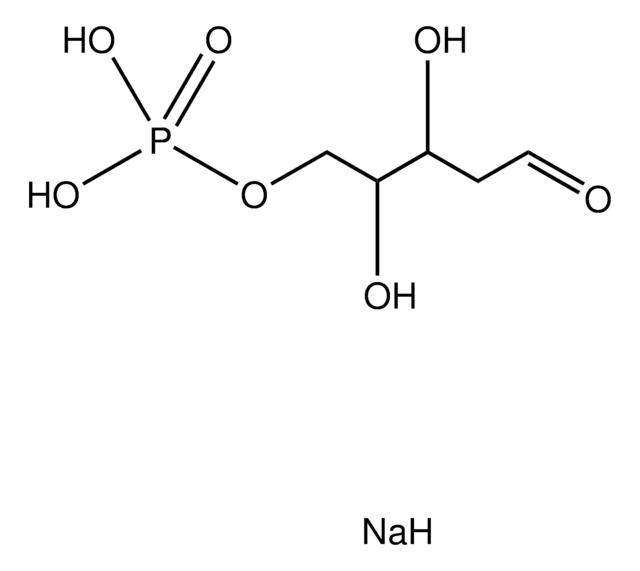T1258
Trizma® acetate
≥99.0% (titration)
Synonym(s):
TRIS acetate salt, Tris(hydroxymethyl)aminomethane acetate salt
About This Item
Recommended Products
Quality Level
Assay
≥99.0% (titration)
form
crystalline powder
pH
6.0-7.0 (0.1 M in water, high purity)
solubility
water: 0.5 M, clear, colorless
SMILES string
CC(O)=O.NC(CO)(CO)CO
InChI
1S/C4H11NO3.C2H4O2/c5-4(1-6,2-7)3-8;1-2(3)4/h6-8H,1-3,5H2;1H3,(H,3,4)
InChI key
PIEPQKCYPFFYMG-UHFFFAOYSA-N
Looking for similar products? Visit Product Comparison Guide
Related Categories
Application
- in the adenosine triphosphate (ATP) assay to neutralize the pH to 7.7 of the oocyte supernatant
- in cell wall isolation to remove proteins and membranes from the cell walls of plants
- as a component of DamID buffer, lysis buffer for cell sorting and lysing
Legal Information
Storage Class Code
11 - Combustible Solids
WGK
WGK 3
Flash Point(F)
Not applicable
Flash Point(C)
Not applicable
Personal Protective Equipment
Certificates of Analysis (COA)
Search for Certificates of Analysis (COA) by entering the products Lot/Batch Number. Lot and Batch Numbers can be found on a product’s label following the words ‘Lot’ or ‘Batch’.
Already Own This Product?
Find documentation for the products that you have recently purchased in the Document Library.
Customers Also Viewed
Our team of scientists has experience in all areas of research including Life Science, Material Science, Chemical Synthesis, Chromatography, Analytical and many others.
Contact Technical Service










